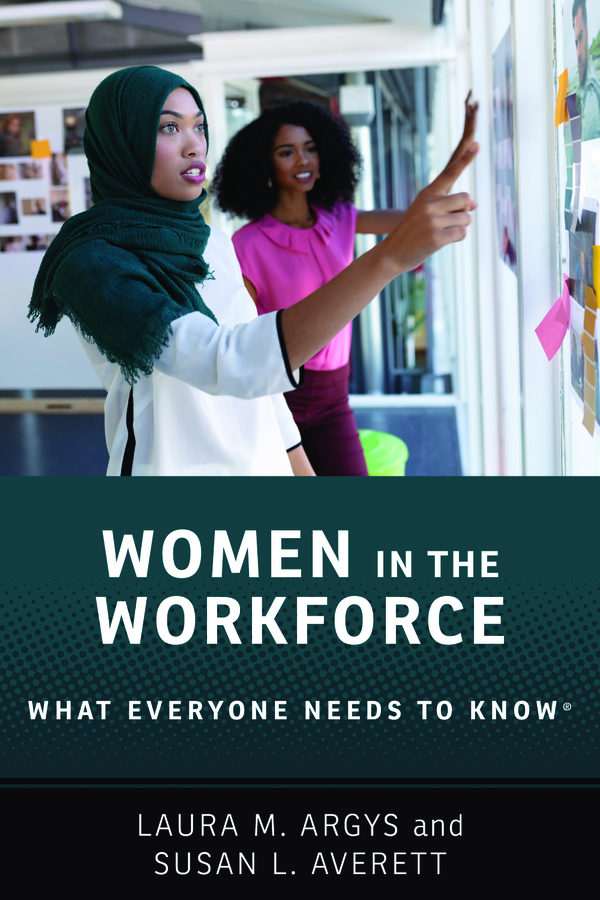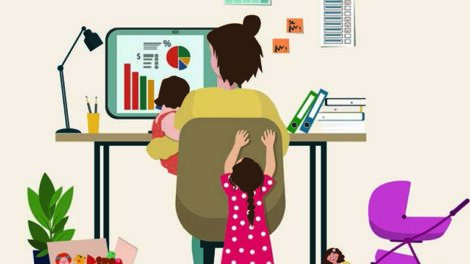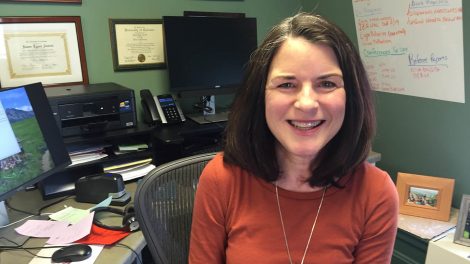Women in the workforce
By Shannon Sigafoos
Charles A. Dana Professor of Economics and acting chair of women’s, gender, and sexuality studies Susan Averett and Laura Argys, professor of economics and associate dean for research and creative activities in the College of Liberal Arts and Sciences at UC Denver, have once again teamed up to examine the crucial topic of being a woman in the labor market.
Back in 2018, Averett and Argys co-authored The Oxford Handbook of Women and the Economy (along with Saul D. Hoffmann). That same year, they published a study together in the Journal of Demographic Economics. With the release of their new book, Women in the Workforce: What Everyone Needs to Know, published by Oxford University Press, they are delving deep to show how the experience of being a woman in the labor market varies by race, ethnicity, sexual orientation, geography, and socioeconomic status. They also focus on the contributions that women make, in paid and unpaid work, to the overall economy.
We sat down with Averett to discuss how the timing of the book release coincides with the two-year anniversary of the pandemic—and how it hit females disproportionately hard. Averett also discusses what the workforce loses when it loses women, advice she’d give today’s workforce, and what employers can offer to keep women happy in their roles.
Women who cut back paid work hours to accommodate family responsibilities risk losing wages, benefits, opportunities for advancement, good mental health, sleep, and personal balance. What choices do women face, and what does the economy lose when it loses women in the workforce?
One of the themes that runs through this book is the idea that because women have, historically, continued to take on the majority of the household work—even when they work full time—that it permeates everything. It means they choose jobs that are more flexible to accommodate their families. Even if they stay in the workforce, they lose advancement. And by taking time out of the workforce, they absolutely lose opportunities. Women lose money, benefits, and society as a whole loses, too. Women worked about 43% of all hours in 2019. Women’s work is a huge contribution to the size of our economy, so everybody loses when we can’t figure out how to get that work/life balance right.

The pandemic obviously threw a lot of that off and was the root cause of many women leaving the workplace. A lot of people use the word “shecession” to describe that mass exodus.
The basic idea behind it is that when there’s an economic downturn and unemployment rates go up, it’s often men who are more affected. Most recessions, like the recession in 2008, saw more men affected than women. But here, we have a ‘she-cession.’ We had women voluntarily leaving work because they had child care issues. Women who were unemployed were also trying to find different jobs to accommodate their family’s needs. We saw dramatic spikes in unemployment for women—particularly women of color, which is not something that’s always talked about. Those women were hit really, really hard with unemployment rates that were in the double digits.
How do employers incentivize? What can they do to convince women to stay with them and grow with them, but also provide them with the balance they need?
I think there’s a lot of different things that they can do. One of the obvious steps is providing some kind of paid maternity leave, or paid time off to care for kids. I also think when you do that, you need to really encourage men to take it. We’ve had some high-profile men say, ‘I’m having a baby, I’m going to take some time off.’ But we know that most men don’t take that time, and there is a very low uptake of parental leave by men, even when it is available. And most of what’s available to the majority of the population is actually unpaid. We also need to subsidize high quality childcare for families where both parents choose to work.
For women, our careers can sometimes become our identity. You work with a lot of students in your Women and the Economy course. Do female students ever talk to you about what they expect or want out of their careers after they graduate?
Some students do tell me that this was eye-opening for them and that they’re not sure they want to have a family. Or, they realize they have to really think about how they’re going to share things with their partner more equally. And I think there’s a movement, especially with younger, more educated women, to really start insisting on more of a 50/50 split with the household and childcare work.
Will you be utilizing your new book in the classroom?
Yes, I absolutely will. I’m excited about it, because I think it is written at a level for a lot of people to understand. There isn’t this economics jargon. There are some really interesting topics in this book that you don’t often see, like how to handle retirement. The choices women make when they are young (marriage, career and family) have impacts on how well they live in retirement. Some groups of older women have high poverty rates because of low earnings in the workforce and biases towards married couples in our Social Security system. Understanding the longer run outcomes of family/career choices is really important.
Do you think that women are becoming more comfortable advocating for themselves? It once used to be taboo for women to speak up about what they want to earn or how they want to be treated in the workforce, but now women have no choice but to talk about those topics.
We actually have a section in the book on different communication styles between men and women. There is not a lot of good evidence yet on how those different communication styles might affect women’s earnings. But if you don’t advocate for yourself, absolutely nobody else is going to do it for you. I am a mother of two daughters who are in the workforce, and that’s actually something I tell them to be aware of. You’ve got to make sure that you stake your own ground, and you shouldn’t just assume that they’re going to notice or reward you for something you’ve done. You should always make sure you’re getting proper credit for it.

